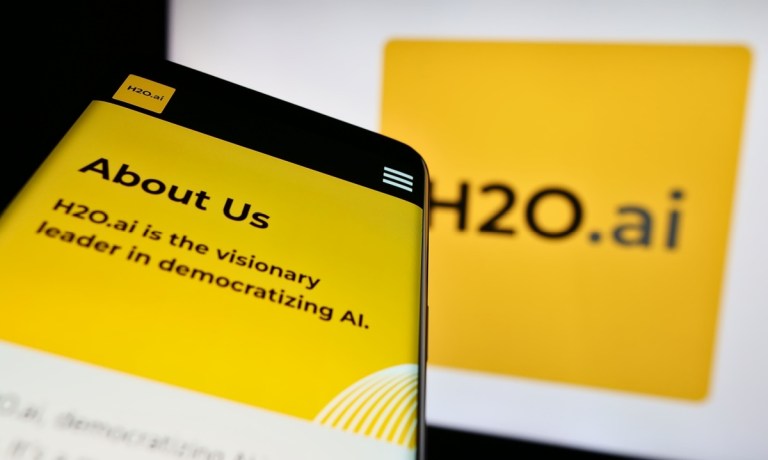Companies from corner stores to retail giants are discovering that pocket-sized artificial intelligence (AI) can ring up big savings, as nimble new language models match their hulking predecessors at a fraction of the cost.
H2O.ai recently launched small models as just one example of a broader shift toward compact AI models that promises to reshape how businesses handle everything from inventory to customer service. These streamlined systems can process purchase orders, receipts, and shopping data with the same accuracy as massive language models while slashing computing costs.
“Smaller AI models can level the playing field between large retailers and small/medium businesses (SMBs) by providing cost-effective solutions for inventory management and customer service automation,” Steven Sermarini, senior director of Engineering-Data & Analytics at eCommerce logistics and payments company Radial, told PYMNTS. “These models enable SMBs to optimize stock levels, predict demand, and automate reordering while enhancing operational efficiency.”
A small language model is a streamlined AI system that processes text using millions of parameters rather than billions. It trades some advanced capabilities for faster performance and lighter computing requirements.
Small Is the New Big in AI
H2O.ai released two smaller AI models (0.8 billion and 2 billion parameters) for document processing and text recognition. The models are freely available on Hugging Face, trained on millions of conversation pairs. The company claims the 0.8 billion model outperforms larger competitors in optical character recognition (OCR) benchmarks.
“We’ve designed H2OVL Mississippi models to be a high-performance yet cost-effective solution, bringing AI-powered OCR, visual understanding, and document AI to businesses,” Sri Ambati, CEO and founder of H2O.ai, said in a news release. “By blending state-of-the-art multimodal AI with extreme efficiency, H2OVL Mississippi delivers precise, scalable document AI solutions across a range of industries.”
Advertisement: Scroll to Continue
Sermarini pointed out that smaller models like those from H20 are typically faster to prototype and develop.
“This enables new, creative players to rapidly design advanced analytics solutions for retail, supply chain and logistics,” he said.
While smaller, more efficient models reduce computing barriers, deploying AI in logistics and retail sectors involves more than cost savings, Stephen DeAngelis, founder and CEO of AI company Enterra Solutions, told PYMNTS.
“Language models still require extensive training, high-quality data, and domain expertise to tackle complex supply chain management and business analytics operational challenges,” he added. “The technological transition will likely be gradual rather than immediate.”
The rise of efficient, smaller AI models is opening doors for startups that can’t afford massive computing costs. These lightweight models let new companies compete and innovate without needing huge budgets for AI infrastructure, Hardik Chawla, senior product manager–technical at Amazon, told PYMNTS. He said he’s seeing many companies build robust retail solutions that run on modest hardware.
“Instead of needing massive GPU clusters, startups can deploy focused models that handle specific high-value tasks — from dynamic pricing to demand forecasting,” he added.
“Consider a startup focusing on stock-out prediction. Rather than building a comprehensive retail AI system, they can deploy a small, efficient model trained specifically on inventory patterns. This focused approach not only reduces development and operating costs but often delivers better results than trying to extract this functionality from a larger, general-purpose model.”
Helping Not Replacing Humans
Despite the benefits of smaller AI models, observers don’t see AI replacing human workers anytime soon. Chawla said that in retail, warehousing and customer service, many routine, manual tasks can be automated, potentially reducing the time spent on repetitive work.
For instance, Chawla said in customer service, an AI could handle common inquiries like order status while an agent steps in for more personalized support. This augmented approach improves efficiency and enhances service quality, making personalized, AI-assisted customer interactions scalable for businesses of any size.
Likewise, for warehouse operations, these models can assist workers by optimizing workflows — suggesting the most efficient routes or flagging potential stock issues in real time. Workers still handle the physical tasks, but AI supports them by reducing errors and boosting productivity.
“Irrespective of the industry — data literacy, AI monitoring, and technology-driven process management are going to become highly sought-after skills,” Chawla said. “To avoid displacement, we’ll need a big push for reskilling and upskilling initiatives. It’s about shifting the workforce to new kinds of roles rather than eliminating jobs entirely.”




